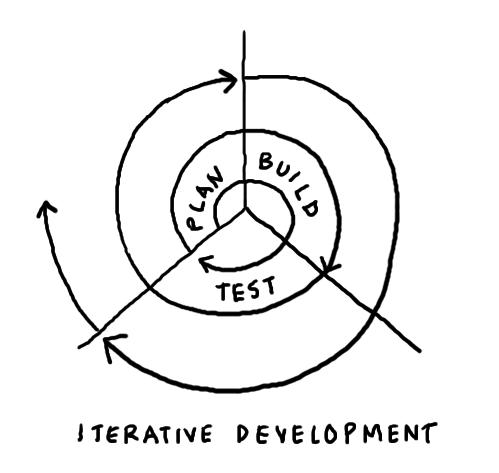How to save your next great website idea

 Trying to go from your new idea straight to finished website can waste a lot of time and money. Here’s how to avoid this.
Trying to go from your new idea straight to finished website can waste a lot of time and money. Here’s how to avoid this.
Lots of clients who come to me for help with a website (or other marketing and branding help) arrive with a beautiful vision for their new business. With the picture formed in their minds, they figure the next step is to get a website to bring their idea to the world.
It seems reasonable: They know what they want to do, but they don’t look like a business yet—so the next step must be to have a logo made, business cards done up, and a shiny new website built. Then, they will be a business, and then they can do their business.
But the problem is: If you expect to go from your good idea directly to a full-fledged business, you’re in for a shock. No matter how great the idea may be, it’s extremely unlikely the world will just start paying you lots of money for it in exactly the way you envision it in your mind.
The problem is that you have not taken your idea out into the world, to get feedback, and adjust where necessary. There is a great saying, paraphrasing an older saying: “no business plan survives contact with the customer.”
Let’s take a simple example. Say you have this wonderful idea to sell natural lemon cleaner that is organic, effective, and half the cost of commercial cleaners. It can’t lose because you’ve got this great way of making it that’s totally unique. So you spend your last $4,500 on website, logo, branding, and run some ads.
After a few months, it’s all up and running, and you’re so excited. What could go wrong? But then, you discover—to your horror—that:
- Someone is already selling a citrus cleaner that’s actually cheaper than yours… or
- It turns out that lemons are considered bad luck among a major part of your audience… or
- Most cleaning companies have long contracts with distributors that they don’t want to break…
You get my point. What you don’t know could derail your idea. In this example, it turns out that with a few small changes to your formula, you could have made lemon frosting, for which there is a high demand! But now you’ve spent $4,500 building a business precisely designed to make something that people don’t want, and it’s going to cost thousands to re-tool everything for the lemon frosting market.
What’s the solution? Iterative development—using short cycles of testing and validation before you finalize everything.
This means:
- You develop your idea in stages, from very rough prototypes introduced to a small audience…
- And getting feedback along the way, you refine the prototypes more and more…
- And interacting with the audience, you get a sense of what they really want and need (and how to sell it to them)…
- Until you are ready to offer them something with a good, close fit to what they need and want
This is the essence of the Lean Startup process, and when I found out about it several years ago, I knew there was something magical about it. Lean Startup provides many ways of testing and validating an idea.
For your website projects, this means:
- The more your idea is new (to you, or to the world), the more you would want to test it first before committing to something final
- Many web developers will have no idea about this, and will gladly charge you a ton of money to build stuff you don’t need yet, and will never end up using
I can describe in later posts just how you go about testing these things out, but for now, I just wanted to caution you before you go ahead and spend a lot on a website you don’t necessarily need yet. An iterative process is the answer to not wasting money and trouble on things you’ll never end up using.
If you’d like help through this process, I will be happy to discuss how I can help you.

